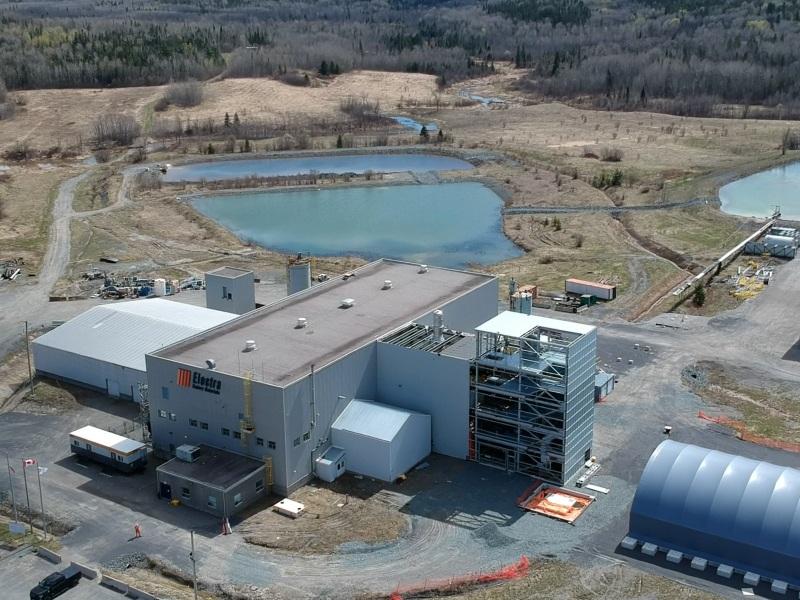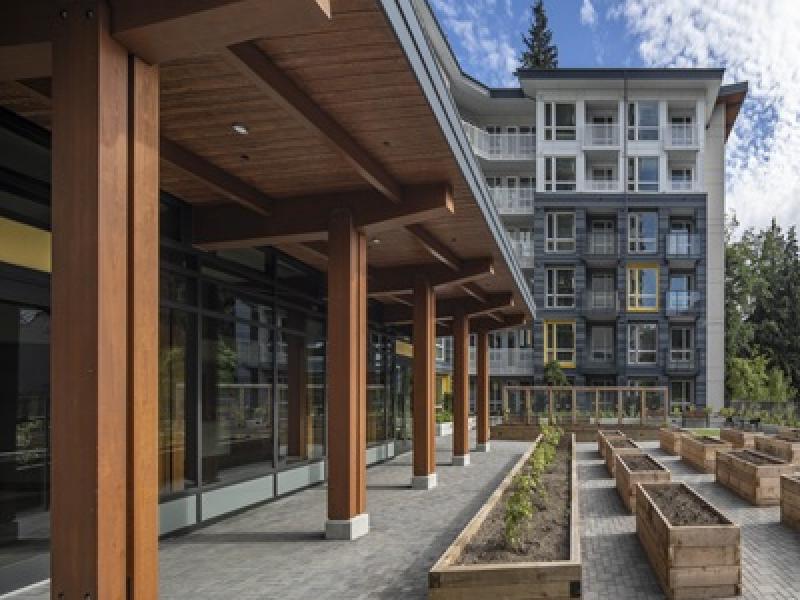
The net-zero goal of Choice Properties was verified by the Science Based Targets initiative. (Courtesy Choice Properties)
The largest Canadian real estate investment trust (REIT) has validated its 2050 net-zero goal by the Science Based Targets initiative (SBTi), lending credence to its sustainability aims as it undertakes a decarbonization of its holdings.
Choice Properties REIT, which was spun-off from Loblaw in 2012, owns and manages 64 million square feet of gross leasable area. With a blend of retail, industrial, residential and mixed-use assets, it became the largest REIT in Canada following its acquisition of Canadian Real Estate Investment Trust in 2018, operating $16 billion in assets.
With such a vast real estate footprint, Choice Properties holds a great deal of influence over decarbonizing the built environment of Canada, a major contributor to the country’s greenhouse gas (GHG) emissions.
Net-zero validation
Its 2021 environment, social, governance (ESG) report emphasized the trust’s attempt for validation from the SBTi for its goal of reaching net-zero greenhouse gas emissions by 2050.
Now, having that net-zero goal validated by the SBTi, Choice Properties told SustainableBiz via email it fulfills its role as one of Canada’s largest landlords to “play a leading role in supporting the transition to a low-carbon economy.”
Ariel Feldman, the senior director of sustainability at Choice Properties, said SBTi was picked for validation because of its “demanding requirements” based on climate science to limit global warming to 1.5°C by the end of the century.
The commitment entails a 50 per cent reduction in absolute Scope 1 and 2 emissions by 2050 from a 2019 baseline year. It also includes a 30 per cent reduction in Scope 3 emissions by 2030 from a 2019 base year, reducing absolute Scope 1 and 2 emissions 90 per cent by 2050 from a 2019 base year, and to reduce absolute Scope 3 emissions 90 per cent within the same timeframe.
Choice Properties will pursue the SBTi targets through installing energy-saving equipment and sharing energy consumption information and best practices with its tenants, electrifying its heating with technology like heat pumps in provinces where the electricity is clean and the weather is relatively warm, sourcing green energy like solar and using low-carbon building materials such as reduced carbon concrete.
He also pointed to the opportunity to clear out confusion in the market over the definition of ‘net-zero emissions’, saying, “we felt that it was important to follow the SBTi process to validate and lend credibility to our own targets.”
Other Canadian real estate players that have made commitments to SBTi include Colliers, Empire Company, Ivanhoé Cambridge, EllisDon, Minto Apartment REIT and Multiplex Construction Canada.
Choice Properties’ net-zero initiatives
The SBTi validation applies to Choice Properties’ plan to decarbonize its assets. The REIT’s ESG report highlighted a 2050 net-zero goal, as well as achieving its 2023 GHG reduction target two years before schedule.
It managed this through a 10 per cent reduction in same-asset GHG emissions within Choice’s operational control (primarily Scope 1 and 2), energy efficiency in its office portfolio and converting over 75 per cent of the exterior lighting in its retail and industrial portfolio to an LED standard.
It has currently reached a 24 per cent reduction in same-asset GHG emissions compared to a 2018 baseline, with most in the Scope 1 and 2 categories.
However, the vast majority of its emissions are in Scope 3, accounting for approximately 95 per cent. “These emissions are not under our direct control, and we need to continue engaging with our tenants and our suppliers to help us achieve our targets,” Feldman said.
He listed enhancing Choice’s green leases and its supplier code of conduct, supporting its tenants’ net-zero projects, and piloting low-emissions equipment and materials as measures to help achieve this goal.
Though he could not provide an exact investment figure due to various factors that could upend the estimate, Feldman pointed to an appetite in the debt market for low-energy and low-emission products.
One initiative Choice Properties took up was its Green Financing Framework for long-term investments in energy transition solutions and climate resilience across its portfolio. It raised $350 million in a bond offering to support investments into green buildings, energy efficiency, pollution prevention and control, and biodiversity and conservation, among other initiatives.
With its strong ties to Loblaw, one of Canada’s largest grocers and retailers, Choice Properties’ sustainability efforts also have influence on the places where Canadians buy their food.
“We believe that we can support our tenants’ goals, and they can support our goals, through collaboration to reduce whole-building energy consumption and use of clean sources of energy,” Feldman said, referring to Loblaw properties.
He also noted the importance of its other clients, saying, “We will also need to work closely with our smaller tenants to help them design, build and occupy energy-efficient, low-emission spaces.”









